On this page
Charles Dixon.This page lists books written by, or including a contribution by, Charles Dixon. The books are ordered by publication date with the most recent at the top.
|
|
|
|
The Bird-Life Of LondonCharles Dixon
Illustrations: John Duncan
W. Heinemann
1909
Preface: "The present volume is the result of many years' observation of the Bird-Life of London. For the past eight years a more or less continuous residence in the Metropolis has enabled me not only to arrange the many notes already in my possession (some of these date back to 1880), but to devote a considerable time to the special study of its avifauna. The species dealt with include all that are found resident within the fifteen-mile radius; all that visit that area either as summer or winter migrants; and, finally, the casual wanderers that occur at irregular intervals. A brief history has been given of each species fairly claiming a place in the list of London birds, together with a description of the adult and young plumage, which will enable the student readily to identify them. My book has been written to encourage the observation of the Bird-Life of London, and I hope it may prove of some assistance to the pursuit of Nature-study in the elementary schools of the Metropolis. Most suburban residents take an intelligent interest in the birds of their particular neighbourhood, and these, I trust, may find something of use to them in the following pages. My radius of fifteen miles may seem a somewhat wide one; but in these days, when space is annihilated, I may be forgiven the extension, although it includes in each direction, very fairly, the limits of the Great Metropolis. The series of singularly life-like pictures which adorns the following pages has been drawn by my old friend Mr. John Duncan, of Newcastle. I am indebted to the proprietors of the Newcastle Weekly Chronicle for permission to use them here, and to them I desire to tender my best thanks for the favour."
|
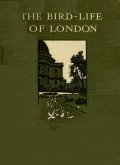

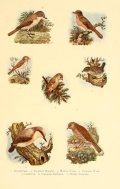 |
|
Open-Air Studies in Bird LifeCharles Dixon
Illustrations: Charles Whymper
Charles Griffin and Company
1903
|
 |
|
Birds' Nests: An Introduction To The Science Of CaliologyCharles Dixon
Illustrations: A.T. Elwes
Grant Richards / Frederick A. Stokes
1902
From the preface: "It is a somewhat remarkable fact that notwithstanding the extreme popularity of the subject of Birds' Nests, no book has yet been published entirely devoted to these beautiful and curious objects. And yet their study - the science of Caliology - is one of the most fascinating branches of Ornithology, perhaps more intimately connected with those difficult problems and questions relating to the mental attributes of what man in his ignorance is pleased to consider the "lower animals," than any other. Indeed, there are many of us who would fain deny the existence of any reasoning faculties whatever in birds, classing their expression in a thousand different ways, all under the vague, meaningless and ridiculous term "Instinct." A bird's nest is the most graphic mirror of a bird's mind. It is the most palpable example of those reasoning, thinking qualities with which these creatures are unquestionably very highly endowed. Evidence of this reasoning power confronts the student of Birds' Nests as he gazes upon each procreant cradle, no matter how crude on the one hand, or how elaborate on the other it may chance to be; for each type of home represents the best possible harmony with the conditions under which reproduction may take place."
|
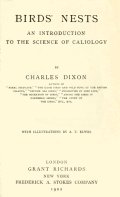
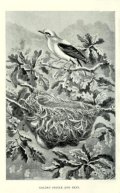
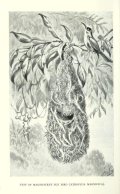 |
|
Among The Birds In Northern ShiresCharles Dixon
Blackie & Sons Limited
New and revised edition
1901
Preface: "The present volume must be regarded more as a popular introduction to the bird -life of our northern shires than in any way as an exhaustive faunal treatise, although at the same time we believe almost every indigenous species has been included. For twenty years we lived surrounded by these northern birds, so that we may fairly claim to have served our ornithological apprenticeship amongst them. With the birds of South Yorkshire and North Derbyshire we are specially familiar; whilst repeated visits not only to the Lincolnshire, Yorkshire, and Northumbrian littoral, but farther afield into Lancashire, and various parts of the Lowlands and the Highlands of Scotland, have enabled us to acquire much personal information relating to the avifauna of many a northern shire. The difference between the avifaunae of the northern and southern shires is strongly marked in many respects. Their study makes a record of avine comparisons of the most intense interest. The important effects produced by latitude and climate upon the bird-life of these widely separated areas make material for fascinating investigation, and have been fully dwelt upon as opportunities were presented. This variation in avine phenomena is not only far too often entirely ignored, but is apt to lead the student of bird-lore astray; due allowance has to be made in many cases for this difference in latitude, and all that it involves. The present volume, then, to a great extent a study of ornithological comparisons, will, we trust, be of some service to the bird lover or the bird student in his task of making allowances. Unquestionably these northern shires from an ornithological point of view are much more interesting than the southern, and especially the south-western counties. Their avifauna is richer, and presents far greater variety, notably during the breeding season; whilst the marvellous phenomenon of Migration there unfolds itself each season in a manner that is never remarked elsewhere."
|
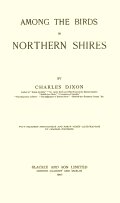

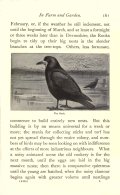 |
|
The Story Of The Birds: Being An Introduction To The Study Of Ornithology
Charles Dixon
Frontispiece: Charles Whymper
George Allen
1900
From the preface: "There are many people who take an intelligent interest in Birds and their Habits, and would like to acquire a more extended knowledge of ornithology were they not discouraged by the dry and technical manner in which such information is usually conveyed. The present volume has been written with a view to removing some at least o^ these obstacles to the acquisition of a general knowledge of Birds. We have sought to tell their story simply and in language as free from technicalities as possible; to produce a guide or handbook to the study of birds that shall be both popular and accurate as we can make it. We make no pretensions to completeness or finality, for such could scarcely have been even approximately reached had each chapter been expanded into a volume; but we do claim for our work that no reader can master its contents without gaining a very general knowledge of the avine kingdom. Whilst always endeavouring to make the Story popular we trust we have never done so at the expense of its philosophic importance."
|
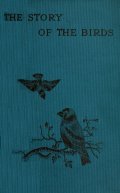
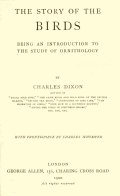 |
|
The Game Birds And Wild Fowl Of The British Islands
Being A Handbook For The Naturalist And Sportsman
Charles Dixon
Colour plates and colour illustrations: Charles Whymper
Pawson & Brailsford
Second edition "enlarged, improved and thoroughly revised by the Author"
1900
From the preface to the second edition: "Since the first edition of the present work was published, our knowledge of various species contained therein has been considerably increased. Not only have several new species been added to the British list (abnormal migrants), but much information has been obtained relating to their geographical distribution and their affinities. The completion of the British Museum Catalogue of Birds, and the publication of many important books and memoirs bearing upon the present subject, have also enabled me to give a more complete account of British Game Birds and Wild Fowl than had hitherto been possible. The present edition has to a very large extent been rewritten: the necessary information has been added to bring the book fairly up to date. The classification remains practically the same ; but many generic changes have been made, and a more or less exhaustive account of the various orders and families has been added. The treatment of each species is much the same as in the first edition, but a short synonomy has been appended to each, which may prove of service to the student anxious to consult the literature of the subject. Since the first edition was published I have devoted much time and study to the Migration and Distribution of Birds, with the result that many previously held opinions have been discarded, and the geographical distribution and migration of the various species have been dealt with in accordance with a suggested new law of dispersal. A short introductory chapter on Distribution and Migration has been inserted. The old set of drawings has been entirely replaced by a series of coloured plates, the original designs for which have been specially prepared by my friend, Mr. Charles Whymper; whilst it is equally satisfactory to be able to state that the lithography and letterpress printing, together with every detail connected with the issue of this new edition, are the work of the celebrated Yorkshire firm whose imprint the present volume bears."
|

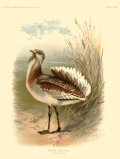
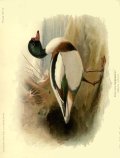 |
|
Bird-Life In A Southern CountyCharles Dixon
Illustrations: Charles Whymper
Walter Scott Ltd
1899
From the preface: "The present volume, as its title suggests, is a record of some of the observations made during a residence of eight years on the south coast of Devonshire, and on many excursions into various other parts of the county. In some respects it may be regarded as a record of comparison ; for I have studied the bird-life of this area coming as a stranger to the county and its ornis, and with a life-long ornithological experience gained in more northern and eastern shires. By all British ornithologists Devonshire must ever be regarded as classic ground; for years it was the home of Montagu one of the Fathers of Field Ornithology and within its borders many of those discoveries were made which are inseparably associated with his name. Few other counties in England present us with a greater diversity of physical aspect; and certainly no other shire is blessed with a milder and more equable climate. So far as sedentary birds are concerned, the county is rich in species, and most branches of our resident avifauna are well represented. But the same can scarcely be said of migratory species, the county being very unfavourably situated for them. Indeed, next to Cornwall, I should feel inclined to class Devonshire as the poorest littoral county in England for normal migratory birds, lying, as it does, too far to the south-west. Its poorness in this respect, however, is not without compensations to the scientific student of the dispersal and migration of Birds, as I have pointed out elsewhere. So far as abnormal migrants are concerned, Devonshire can compare favourably with any other county. Devonshire is par excellence a field naturalist's county; an area in which outdoor work can be carried on throughout the year under the most favourable and pleasant conditions, abounding with an avifauna of exceeding diversity. Some of our rarest British birds still find a sanctuary here; one or two species are commoner here than elsewhere."
|

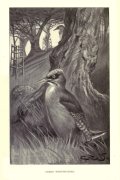
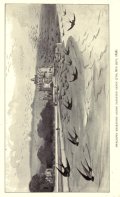
|
|
Lost And Vanishing BirdsBeing A Record Of Some Remarkable Extinct Species And A Plea For Some Threatened FormsCharles Dixon
Illustrations: Charles Whymper
John MacQueen
1898
From the preface: "One of the saddest features of civilisation is the disappearance of so many beautiful and curious creatures from this world of ours. From all parts of the earth the same story comes; and we now seem to be within measurable distance of a time when wrecks and remnants of once compact and indigenous assemblages of organisms will be all that remain to us, and such a thing as a complete fauna will be unknown. This is not only a crime, but the violation of a sacred trust which we hold for posterity. Civilisation has already ground away under its merciless heel most of the faunal facies of Europe; Asia fares but little better, and is fast being reduced to the same state ; Africa is being rapidly depleted of all its most curious and striking forms of animal life; Australasia is a wretched object lesson of civilised man's exterminating progress ; whilst North America has already lost some of its ancient types, and is fast losing the remainder: South America alone retains its prehistoric fauna in greatest completeness, although even here the sad work of extermination has commenced. Birds have suffered severely in this general spoliation, and their extermination and persecution furnish material for some of the saddest chapters in the annals of ornithology. In the present volume an effort has been made not only to focus in a popular form our knowledge of the species we have lost and are still likely to lose, but to excite a greater interest in the protection of birds, particularly in those species, at home and abroad, that are more or less threatened with extermination at the present time."
|

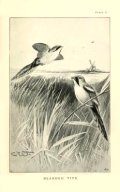
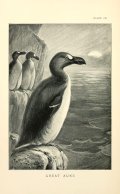 |
|
Birds Of The British IslesDrawn and described by John Duncan
Introduction: Charles Dixon
Walter Scott Ltd, London
1898
450 pages with approximately 400 black and white illustrations. There is an illustration and short piece of text for each species. From the authors preface: THE drawings of British Birds which appear in this work were originally published in the Newcastle Weekly Chronicle, extending over a period of nearly ten years. Numerous correspondents of that paper expressed the wish that, when the series was completed, the drawings, with descriptions of the birds, should be published in book form. It is mainly in response to repeated suggestions of this kind that the present work is offered to the public.
The birds were drawn with the view of giving students of nature a strictly accurate representation of each specimen, with as much detail as was considered necessary for identification. Although every endeavour has been made to indicate the various markings of the feathers, bill, feet, etc., I venture to think that in no instance have I sacrificed artistic
completeness for mere elaboration. The classification is based on a simple plan, and I hope that the general reader will appreciate the
system adopted. The explanatory notes that accompany each drawing are brief, but nothing material has been omitted. In the great majority of cases the drawing and colouration of the adult male bird in summer plumage is given ; but in many instances the adult female and young are also described. The Appendix contains the names of birds which are said to have occurred in a wild state in the British Isles, but the claims of which to be included in the British List are doubtful.
|
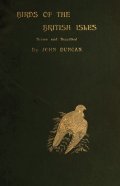
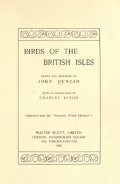
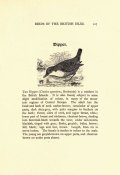 |
|
Our Favourite Song Birds: Their Habits, Music, And CharacteristicsCharles Dixon
Illustrations: Henry Stannard
Lawrence & Bullen
1897
Preface: "The ever-increasing interest which birds excite, the ever-widening circle of students and admirers they continue to attract, is most eloquent testimony to the exceptional charm of Ornithology as a science. Of all wild creatures Birds are incomparably the popular favourites. Their engaging ways, their comings and their goings at appointed times and seasons, their gay colours, their beautiful nests and pretty eggs, their domestic affections and ties, and above all their wonderful music, attract the least sentimental among us, arouse our sympathies, and charm the majority of us to a degree unapproached by any other living forms. The music of the fields and woodlands is one of the most gratifying pleasures of the country. The variety of these songs is great, their beauty a refreshing and perennial one. But vast numbers of people to whom the songs of birds are a constant source of delight, know very few of these singers by name; they are at a loss to identify them, although familiar enough with many of their songs, and are practically ignorant of their habits and economy. The present volume has been written to furnish just the popular information respecting our favourite song birds that the less informed average observer would like to acquire. It is neither an ambitious nor a scientific treatise, but a simple guide to the characteristics, the songs, and the habits of those common birds of ours whose voices at one season of the year or another gladden almost every country stroll. That it may prove a pleasant and informing companion to these rambles is the hearty wish of its author, who has used every endeavour to make it so."
|
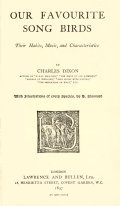

 |
|
Curiosities of Bird LifeCharles Dixon
George Redway
1897
Subtitled "An account of the sexual adornments, wonderful displays, strange sounds, sweet songs, curious nests, protective and recognitory colours, and extraordinary habits of birds"
|
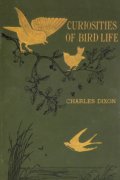 |
|
British Sea BirdsCharles Dixon
Illustrations: Charles Whymper
Bliss, Sands And Foster
1896
290 pages guide with 8 black and white plates. There are 8 chapters in this books.
- Gulls and terns
- Plovers and sandpipers
- Guillemots, razorbill, and puffin
- Divers, grebes and cormorants
- Ducks, geese and swans
- Petrels
- Littoral land birds
- Migration on the coast.
|
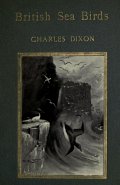
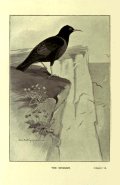 |
|
The Migration Of British Birds
Including Their Post-Glacial Emigrations As Traced By The Application Of A New Law Of DisperalBeing A Contribution To The Study Of Migration, Geographical Distribution, And Insular Faunas
Charles Dixon
Chapman & Hall
1895
From the preface: "The present volume is the result of much additional thought and hard work generally upon the subject of Avian Emigration and Migration. It is a subject that has a peculiar fascination for me, doubtless because it offers all the charm of novelty, and is as yet a practically unworked field of research. No branch of Ornithology can possibly be more interesting than that which treats of the Dispersal - either by Emigration or Migration of Birds over the globe. To many naturalists this dispersal may appear entirely fortuitous, or very largely due to such abnormal influences as Glacial Epochs. I honestly confess that for many years I was imbued with very similar ideas - what all men accepted as true must assuredly have been truth. But after a long and careful study of the phenomenon of Emigration (or Range Extension) I began to doubt some of the most generally accepted views respecting the Geographical Distribution of Species. Difficulty after difficulty arose, convincing me more and more that the solution of the problem must be sought in other directions. After much hard work at the distribution of Birds generally, I have been enabled to propound what I believe to be a Law of Dispersal, The present volume is the development and application of that Law. I may here remark that this Law has been gradually developed from a vast number of accumulated facts, and is not a result of any preconceived theory."
|

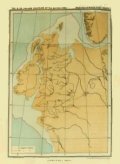 |
|
The Nests And Eggs Of British Birds
When And Where To Find Them: Being A Handbook To The Oology Of The British Islands
Charles Dixon
Chapman & Hall
Illustrated "large paper" edition
1894
This book was first published, without illustrations, in 1893.
From the preface: "The following pages deal exclusively with the birds that breed within the confines of the British Archipelago ; consequently the student will find several familiar species omitted, the Fieldfare and the Redwing for example, they having no claim whatever to be considered in a work which professes to be a Handbook to the Oology of our islands alone. The idea of a work on the Nests and Eggs of British Birds occurred to me some twelve years ago ; and from that time to the present I have been carefully collecting facts, examining specimens, and so on, with the object of forming a comprehensive handbook to British Oology. The results of my studies are now presented to the reader in the following pages. Most of my information has been obtained from personal observation ; and with very few exceptions I have taken with my own hands nests and eggs of all our British species ; whilst with most of them I have extended my observations over periods of many years."
|
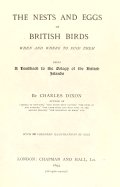
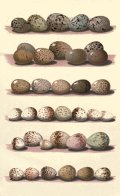 |
|
The Nests And Eggs Of Non-Indigenous British Birds
Or Such Species That Do Not Breed Within The British Archipelago
Charles Dixon
Chapman & Hall
1894
With a coloured frontispiece
From the preface: "The present work forms the companion volume to The Nests and Eggs of British Birds, and renders the subject of British Oology complete, so far as our knowledge now extends. It deals exclusively with the nidification of the birds that do not breed in the British Archipelago, but visit our islands regularly in winter, pass the coasts on passage, or pay them their more or less irregular visits as wanderers from their normal areas of dispersal. I have spared no pains to make the subject as complete and full of information as possible; but, as the student will eventually discover, there still remains a vast amount of work to be done, which will take years and years of further study to accomplish. Of the birds that breed in civilized areas our information is fairly complete, although even here many details are wanting respecting the habits of birds in the pairing and breeding seasons, the number of broods reared, and the duration of the periods of incubation. When we come to deal with species that spend the summer in the Arctic regions, or dwell permanently in deserts, and in countries little explored by the scientific naturalist, our want of information becomes only too woefully apparent. I am sanguine enough to hope that by pointing out the deficiencies in our knowledge, I may stimulate observation, and thus help in one way to reduce them."
|
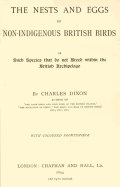
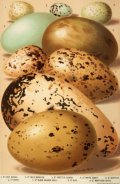 |
|
Jottings About BirdsCharles Dixon
Frontispiece: J. Smit
Chapman & Hall
1893
From the preface: "The following pages deal with bird-life under many aspects and in various lands. Notwithstanding this latter fact, I have no hesitation in saying that the chapters dealing with a more cosmopolitan ornithology appeal even to the reader whose researches embrace British birds alone. No student of ornithology can well confine his work to the birds of a single region, or even of many regions; for he will invariably find that the deeper he attacks his subject the wider he will have to roam. This applies not only to affinities, but to habits and instincts as well. I am heartily glad to see a growing taste for this wider study amongst British naturalists, especially in the younger generation; it is a healthy sign, and will serve to place the work of the future on a sound foundation."
|
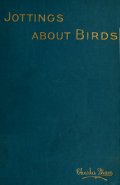
 |
|
The Nests And Eggs Of British Birds
When And Where To Find Them: Being A Handbook To The Oology Of The British Islands
Charles Dixon
Chapman & Hall
1893
An illustrated edition of this book was published in 1894.
From the preface: "The following pages deal exclusively with the birds that breed within the confines of the British Archipelago ; consequently the student will find several familiar species omitted, the Fieldfare and the Redwing for example, they having no claim whatever to be considered in a work which professes to be a Handbook to the Oology of our islands alone. The idea of a work on the Nests and Eggs of British Birds occurred to me some twelve years ago ; and from that time to the present I have been carefully collecting facts, examining specimens, and so on, with the object of forming a comprehensive handbook to British Oology. The results of my studies are now presented to the reader in the following pages. Most of my information has been obtained from personal observation ; and with very few exceptions I have taken with my own hands nests and eggs of all our British species ; whilst with most of them I have extended my observations over periods of many years. In the present volume I have endeavoured to foster Oology as a science, not to encourage the indiscriminate collecting of these beautiful objects from the promptings of a mere bric-a-brac mania. The nest and eggs of a bird to a great extent reflect the life-history of the bird itself, and vividly illustrate no unimportant part of that bird's economy."
|
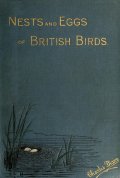
 |
|
The Migration Of Birds
An Attempt To Reduce Avian Season-Flight To Law
Charles Dixon
Chapman & Hall
1892
From the preface: "There is no branch of Ornithology more popular than that which treats of the Migration of Birds. To the genuine lover of birds there is no more fascinating pursuit than to watch the comings and the goings of his favourites; to the more scientific ornithologist Migration is not only an intensely interesting proceeding in itself, but a function fraught with importance in the History of Avian Life. In many instances it is an indicating medium of affinities, an explanation of various apparent anomalies in geographical distribution, and unquestionably an evidence of those vast physical changes which have been one of the dominating features of our planet's history in past ages. Notwithstanding the immense popularity and importance of Migration, strange as it may seem, no work has hitherto been devoted expressly to its discussion, A very large amount of material bearing on Migration has been recorded, and an equally large amount of observations has been made on this grand Avian Movement, but hitherto, so far as I am aware, no naturalist has endeavoured to grapple with the entire Phenomenon, or to record the result of its general study in book form, I am well aware of Palmen's endeavours, of Gatke's efforts, but both these distinguished naturalists have only dwelt upon a portion of the subject. I am equally cognizant of the researches of Weissemann, Harvie-Brcwn, Cordeaux, Seebohm, Coues, and Allen, and a host of others; yet none have sought to exhaust the subject, even superficially, or to bring our present knowledge of Migration within the limits of order, or to reduce it to Law."
|

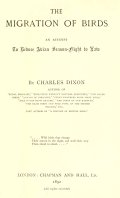 |
|
The Game Birds And Wild Fowl Of The British Islands
Being A Handbook For The Naturalist And Sportsman
Charles Dixon
Illustrations: A.T. Elwes
Chapman & Hall
1893
A second edition of this book, with different illustrations, was published in 1900.
From the preface: "Every naturalist may not be a sportsman, but there are certainly very few sportsmen that are not, or do not eventually become, ardent naturalists. The habits and economy of birds are specially the naturalist's own province; but then, on the other hand, no sportsman worthy of the name is indifferent to the life-history of the birds and beasts that are the object of his chase. A man who would be a successful sportsman must be familiar with the ways of the creatures that furnish his sport ; not only so, the constant chase of bird and beast, in nine cases out of ten, creates a desire for knowledge, and a wish to know something more of their economy. The present volume has been written with the object of furnishing the naturalist and sportsman with concise yet fairly complete, and I hope accurate, information respecting the Game Birds and Wild Fowl of the British Islands, and their allied races and species in other parts of the world. I have sought to bring this information up to date, not only by including several species new to our avi-fauna, but by dealing with these birds from an evolutionary point of view, and according to modern ideas on and recent discoveries in that particular branch of natural knowledge which is embraced by Darwinian Ornithology. Hence it has been my constant care to discard insular and narrow study, which only too often leads to pedantry and error, and to treat the birds incorporated in the following pages on broad, evolutionary lines, and from a more cosmopolitan point of view."
|
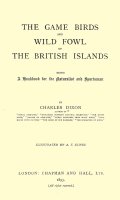
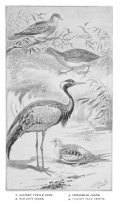
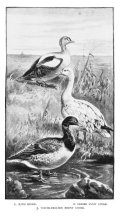 |
|
The Birds Of Our Rambles
A Companion For The Country
Charles Dixon
Illustrations: A.T. Elwes
Chapman & Hall
1891
Contents.
Ramble I: Round About The Homesteads, The Highways,
And The Rocks, Ramble II: In Garden, Park, And Shrubbery, Ramble III: Along The Lanes And Hedgerows, Ramble IV: Across The Open Fields And Downs, Ramble V: Through The Woods, Ramble VI: By Lakes And Streams, Ramble VII: On The Moors, The Commons, And The Heaths, Ramble VIII: Up The Mountains, Ramble IX: Over The Broads And Swamps, Ramble X: Along Rock-Bound Coasts. Ramble XI:By Sandy Shores.
From the preface: "The present little volume must be looked upon as an introduction to the study of Field Ornithology, rather than as an exhaustive treatise on the habits of Birds. It has been written with the earnest endeavour to supply what I believe to be a wide-felt want a handy book about British Birds, so arranged that these creatures may be readily identified in the various haunts they affect. In a subject of this nature the identification of the species is the most important item ; and this I have tried to render easy by directing the observer's attention to whatever is most likely to attract his notice, or to be impressed upon his mind the notes, the general appearance, or peculiarity of habit, being seized upon to introduce the birds to him. Then, having once done that, I have sought still further to stimulate his interest in them by supplying some of the most salient features in the economy of each. The vast extent of the subject prevents much detail being given; but I venture to assert that when the student has mastered the information furnished he cannot fail from being fairly well conversant with the habits, notes, and appearance of the birds that regularly inhabit our country. Of the pleasure derived during the process of acquiring this information concerning our feathered friends, it would be impossible to speak with any exaggeration of its intensity. Of all living creatures that in the wilds do dwell, Birds appeal most forcibly to our notice. They are the most apparent wild creatures of our rambles, and not only so, they are universal in their distribution. No description of scenery is devoid of Birds; they are alike the life of the wilderness, and the charm of more homely country."
|


 |
|
Idle Hours With Nature
Charles Dixon
Chapman & Hall
1891
Review from the Spectator, October 1891: "Dixon always writes so pleasantly, and yet with so much thoroughness and attention to details, that we look forward to his books, confident that he will teach us something and express some decided opinion that will help to clear a knotty point. There are chapters about all the phases of bird-life, some devoted to the habits of particular families, such as swallows and gamebirds; others to the bird-life of certain localities, the water-side, the orchard; and others, again, to the division of daily song, the evolution of changing habits, and the wonderful problem of migration_ Good examples of different subjects are "Peeps between the Reeds," a charming chapter, and "Sunny Days in a Sunny Land," where Mr. Dixon takes us to Algeria. But it is all good, and the writer knows how to tell us of familiar things without merely repeating them. He has something to say about migration in "North by West and South by East," and all through there is a leaven of thoughtful observation and true appreciation of the significance of the mysterious habits and movements of birds."
|
 |
|
Stray Feathers From Many Birds
Being Leaves From A Naturalist's Note-Book
Charles Dixon
Illustrations: Charles Whymper
W.H. Allen & Co
1890
From the preface: "Twenty years knocking about amongst birds and beasts at home and abroad has furnished me with a great variety of notes concerning their habits, economy, and haunts. I have compiled many of the following articles from my journals, others have been given almost word for word as they were written on the spot, whilst a few are simply extracted from them without any touching up or embellishment whatever. My principal aim in publishing them is to endeavour to foster habits of careful and loving observation and a taste for Natural History in the reader whose idle moments may be spent out of doors in the country. There is interest everywhere; there are living creatures whichever way we turn, all appealing, as it were, for notice and for admiration. The sermons preached by Nature in her lovely temple are full of beauty and simplicity; each one of us is welcome there, the seats are free to all. To those who hitherto have looked at Nature as a sealed book, or have given no thought to the romance of the wild life around them, I frankly say they are missing much. The pleasures derived from the woods and fields are no fleeting ones; they leave a long train of golden memories behind them, and furnish stores of intellectual food which may be drawn upon perhaps when Fate has removed the observer far from the country scenes he knew and loved so well to the busy city or begrimed and smoky town. There are "stray feathers" of information floating about the highways and the byways, the woodlands and the waters. Reader, seek these delightful places and gather them. Believe me, there is not a bird or a flower that will not tell you something if you only question it aright."
|
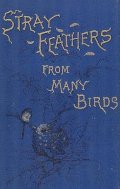

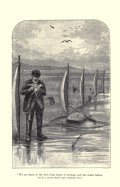 |
|
Annals Of Bird Life
A Year-Book Of British Ornithology
Charles Dixon
Illustrations: Charles Whymper
Chapman and Hall
1890
From the preface: "ONE of the greatest charms attached to the study of Ornithology is to keep a careful register day by day and month by month of the various movements and habits of birds. The recording of these facts is absolutely the best apprenticeship an aspiring student can serve; it teaches him to see things for himself, not to rely on statements made by others; it gets him into the best way of investigating Nature's secrets ; and above all, it furnishes him with an endless store of fascinating information relating to the economy of wild creatures. Diaries nowadays are often filled with too much trivial, not to say worthless matter with stupid thoughts, and chronicles of trashy incidents, which would be put to much better use were they more often made the receptacle for the story told by Nature and her works. The country is full of charm its interest never wanes; and that district becomes the most interesting which is the most carefully and intelligently explored. In the following pages I have endeavoured to place before the reader a few of the stirring incidents and vivid scenes of bird life during the cycle of the year. It has been my object to convince him that interesting information respecting the feathered tribes may be gleaned through every month of the twelve. It has been my constant endeavour to impress on the student the fact that the birds he observes and studies are animated by Life precisely the same as his own, and to allow these feathered creatures that important share of intelligence which their high mental qualities demand, Too long have birds been regarded as mere machines; yet their little lives, far from being the prosaic, automatic existence we have been so accustomed to suppose them, are full of poesy and intellectual fire. To appreciate thoroughly the habits and the ways of birds we must never lose sight of their mental attributes."
|
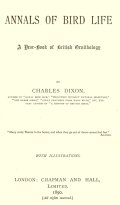
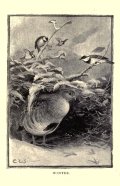
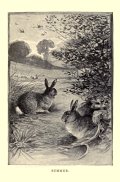 |
|
Our Rarer Birds : Being Studies In Ornithology & OologyCharles Dixon
Illustrations: Charles Whymper
Frontispiece: J.G. Keulemans
Richard Bentley & Sons
1888
From the preface: "The following Studies deal principally with the habits and economy of those rarer British birds which, from the remote and secluded districts they frequent, the localness of their distribution, and their shy and retiring disposition, do not come very generally under the notice of casual observers. In wandering through the woods or along the shore, or over the mountains and the moors, the observer often obtains a cursory glimpse of these our rarer birds; the object of this volume is to enable him to identify them, and to make him familiar with their habits and characteristics. Fifteen years of my life have been spent in this labour of love - in gathering from personal observation the facts which are here recorded. The greater part of these pages has been written in the places where my information was obtained - in field and forest, on mountain and cliff, with the birds themselves around me. The naturalist may doubtless find some facts new to him in these Studies, and many questions relating to the economy of birds have been discussed. In the following pages I have always endeavoured to lead the observer to a contemplation of those higher questions of Natural Science which Ornithology so aptly illustrates, and to put him in the way of appreciating the scientific value of his researches. I also believe that in publishing my observations within the compass of a single volume, I am filling a want long felt by field naturalists, who have hitherto only been able to obtain any information respecting our rarer birds from large and costly works on British Ornithology. In making my selection of our rarer birds from the four hundred species which are regarded as British, I have used every care, weighing impartially the claims of each to bie so considered. "Our Rarer Birds," so far as the purposes of the work before us are concerned, are species that cannot be met with everywhere, like the Robin and the Thrush, the Sparrow and the Swallow; and in addition I have laid it down as a sine qua non that each must breed within the confines of the British Islands. In this I follow the ornithological axiom that a bird's breeding-place is its true home. Exception has only been made in the case of the Knot; and I am pleased to see that the Snow Bunting's nest has been actually obtained in Sutherlandshire, at an elevation of nearly three thousand feet. The classification I have adopted is what seems to me the most natural, although the many gaps in my list of species, which only a selection of British birds necessarily entails, breaks much of the proper order of sequence. Probably the classification of birds is as far from a definite and natural settlement as ever it was, no two authorities agreeing in their ideas as to the relative value of anatomical characters. Where doctors disagree so woefully, it is not possible within the restrictions of space here laid down either to discuss the pros and cons of scientific arrangement, or to become responsible for any new departure. This work is written for the lover of birds, not for the student of their pedigree or the quibbler over their classification."
|
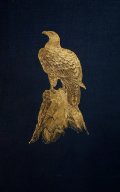


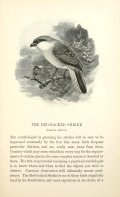 |
|
Evolution Without Natural Selection; Or, The Segregation Of Species Without The Aid Of The Darwinian HypothesisCharles Dixon
R.H. Porter
1885
From the preface: "A few words are perhaps necessary by way oŁ preface to the following pages. How were they written? why were they written? In the first place, having occasion to thoroughly work out the plumages and distribution of British birds and their allies from an evolutionist's point of view, I was often sorely puzzled in attempting to harmonize the facts before me with Darwin's theory of Natural Selection; and consequently I attempted to explain them by other and, what I believe to be, neglected causes. In the second place, I was led to write up into the present form the result of my investigations and speculations in the belief that they would prove of interest to many naturalists and perhaps, no matter in how humble a way, serve to encourage research and stimulate inquiry in a branch of Biology which is, as yet, almost entirely uninvestigated. If I can convey to the reader even a little of the charm which this subject possesses I shall be more than repaid."
|
 |
|
The Ornithology of St. Kilda
Charles Dixon
Colour plate (Troglodytes hirtensis): J.G. Keulemans
Ibis: Volume 27, Issue 1, pages 69-97
1885
Opening lines: "Perhaps no part of the British Islands is more interesting to the ornithologist than St. Kilda. On this bleak and sublimely grand ocean-rock some of the rarest and the most interesting birds in our fauna find a congenial home; here alone they may be studied at their breeding-places. Now that it is known that St. Kilda possesses a Wren peculiar to its rocky shores the interest attaching to it will be increased, and the fact may serve to draw the attention of British ornithologists to the little bird's secluded home."
|
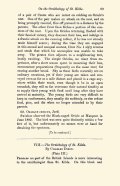
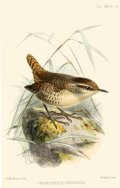 |
|
A History Of British Birds, With Coloured Illustrations Of Their EggsHenry Seebohm
Includes contributions by Charles Dixon
R.H. Porter
1883-1885
Published in 4 volumes. Volumes 1 to 3 comprise the descriptions of the species with some black and white illustrations. Volume 4 comprises coloured plates of eggs. From the authors introduction: The number of books which have been published on British birds is so great that it might be thought that every thing that could be said on the subject had been already well said. But such is the rapid progress which ornithology has made during the last few years that even the earlier portions of Dresser's Birds of Europe and Newton's edition of Yarrel's British Birds are quite out of date. Not only have many important gaps in the geographical distribution of some of our commoner birds been filled up, and a large part of the history of some of the rarer ones been discovered, but in many respects I have found it necessary to look upon the whole subject from a different point of view. The arguments in favour of the theory that the species of animals now existing in the world were evolved by natural laws, some of which we have discovered, from species of a more primitive type which lived in remote geological ages are so irresistible that it is impossible to ignore them. At the first glance it would seem that the development of a species was a subject quite apart from its present history; but it will be found that this question of the development of species by evolution is one which lies at the foundation of all inquiries into the history of individual species; and when it is answered in the aflirmative, the study of ornithology is found to possess a new interest, many obscure points become comparatively clear, and the old treatment of the subject requires modifying in various ways.
|
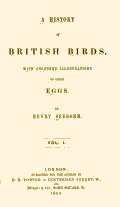

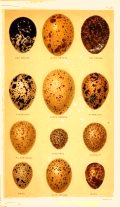 |
|
Rural Bird Life
Being Essays On Ornithology With Instructions For Preserving Objects Relating To That Science
Charles Dixon
Illustrations: G. Pearson
Longman, Green And Co
1880
Subsequent editions in the 1890s in Britain and the United States
Preface: "I have now for years been engaged in a study of Ornithology; and from my numerous notes, principally on the economy of our commoner inland birds, I conceived the idea that from them might be compiled a little volume that might doubtless prove of interest to those persons who have a love for rural pursuits and the study of nature. There are also I believe a few fresh facts on the economy of birds noted, which I respectfully submit to working ornithologists, as well as several moot questions, relating to the natural history of birds, discussed, and opinions, gained by experience, promulgated. Had I spent more of my time amongst books instead of amongst bogs, I have no doubt but what this little volume would have found more favour amongst a certain class of naturalists, no matter how questionable or erroneous the matter it contained. But such was never my intention. A work purely original I intended it to be a work whose materials have been obtained by unwearied personal observation in the field and the forest, and for the most part written in the several haunts of the birds described, and free from the harsh, and, in a measure, unmeaning technicalities with which at the present time ornithology is so pervaded, to the utter confusion of every aspirant to this delightful science. If, through a perusal of this unpretending little volume, I may be the remote cause of sending a few fresh labourers into the vineyard of ornithology, my labours have not been in vain, and it will please me much. Should the then intending ornithologist wish for a more technical insight into the science he has adopted, I recommend him to acquaint himself with one of the few useful exhaustive works on this science, where he will obtain the information he seeks. My object in giving publicity to this little work has been solely to excite a love for the study of the feathered tribes to place in a popular form the true economy of birds, showing their relations and positions in Nature's great system; and to thee, gentle reader, I leave the task of saying if I have succeeded. With these few remarks I commit it to your considerate care."
|
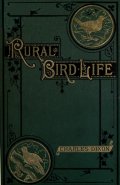
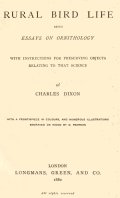
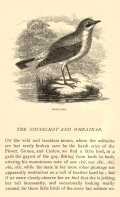 |
|